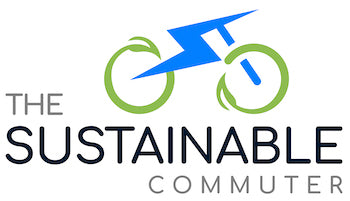
Rural Public Transportation: Overcoming Challenges
Share
Introduction
Rural public transportation refers to the transportation systems and services available in rural areas. Unlike urban areas, where public transportation options are abundant and well-developed, rural areas often face unique challenges in providing efficient and accessible transportation for their residents. In this blog post, we will explore the challenges faced by rural public transportation and the importance of finding sustainable solutions.
Challenges of limited infrastructure in rural areas
One of the primary challenges faced by rural public transportation is the limited infrastructure in these areas. Rural communities often have fewer roads and highways, making it difficult to establish and maintain a comprehensive transportation network. The lack of infrastructure also poses challenges for transportation providers in terms of scheduling and route planning.
Limited funding for rural public transportation
Another significant challenge is the limited funding available for rural public transportation. Rural areas typically have a smaller tax base and population, making it harder to generate sufficient revenue to support transportation services. As a result, many rural transportation systems struggle to secure adequate funding to maintain existing infrastructure and expand their services.
Impact of limited transportation options on rural communities
Limited transportation options can have a significant impact on rural communities. Without reliable and accessible public transportation, residents may face difficulties in accessing employment opportunities, healthcare services, and educational institutions. This lack of mobility can lead to social isolation and economic disparities in rural areas.
Economic challenges of providing rural public transportation
Providing public transportation in rural areas can be economically challenging. The low population density and long travel distances make it less cost-effective to operate and maintain transportation services. The cost per passenger mile is often higher in rural areas, making it difficult for transportation providers to cover their expenses.
Environmental considerations of rural public transportation
Rural public transportation also faces environmental considerations. In areas where private vehicle usage is high due to limited public transportation options, there is a significant impact on air quality and greenhouse gas emissions. Developing sustainable and environmentally friendly transportation options in rural areas is crucial to mitigate these environmental challenges.
Equity and social justice issues in rural transportation
Equity and social justice issues also arise in rural transportation. Many rural areas are home to low-income communities and marginalized populations who heavily rely on public transportation. Ensuring equitable access to transportation services is essential to promote social inclusion and equal opportunities for all residents.
Technological innovations in rural transportation
Technology and innovation can play a vital role in addressing the challenges faced by rural public transportation. Advances in digital platforms, such as mobile applications and online booking systems, can improve the efficiency and convenience of rural transportation services. Additionally, technologies like electric vehicles and autonomous vehicles have the potential to transform rural transportation, providing more sustainable and accessible options.
Government policies and funding for rural transportation
Government policies and funding play a crucial role in supporting rural public transportation. Governments at all levels need to prioritize rural transportation initiatives and allocate sufficient funds to ensure the sustainability of these services. Additionally, policies that promote collaboration between different transportation providers and encourage public-private partnerships can help overcome the challenges faced by rural public transportation.
Role of community initiatives in addressing rural transportation challenges
Community initiatives can also contribute to addressing rural transportation challenges. Local organizations and community groups can work together to identify transportation needs, advocate for improved services, and even establish their own transportation solutions. Community-driven initiatives can help fill the gaps left by traditional transportation providers and ensure that the unique needs of rural communities are met.
Comparisons between urban and rural public transportation
When comparing urban and rural public transportation, it is essential to recognize the inherent differences between these two contexts. Urban areas tend to have more extensive transportation networks, higher population densities, and better access to funding. However, rural areas often have their own advantages, such as lower traffic congestion and a closer connection to nature. Understanding these differences is crucial when designing transportation solutions that are tailored to the specific needs of rural communities.
Solutions
To overcome the challenges faced by rural public transportation, several solutions can be implemented:
1. Adequate funding for rural public transportation: Governments and transportation authorities need to allocate sufficient funding to support rural transportation services. This funding should consider the unique challenges faced by rural areas and prioritize the needs of underserved communities.
2. Integration and coordination of services: Integrating different transportation modes and coordinating schedules can improve the efficiency and accessibility of rural transportation. By connecting buses, trains, and other modes of transportation, passengers can have seamless and convenient travel experiences.
3. Technology and innovation: Embracing technology and innovation can significantly enhance rural transportation services. Digital platforms, like mobile applications and online booking systems, can make it easier for passengers to plan their trips and access real-time information. Additionally, technologies like electric vehicles and autonomous vehicles can provide sustainable and efficient transportation options in rural areas.
4. Partnerships with private companies: Collaboration between public transportation providers and private companies can lead to innovative solutions for rural transportation. For example, Uber has partnered with the city of Denver, Colorado, to provide subsidized rides for residents in underserved areas. Such partnerships can help expand transportation options and fill the gaps in rural communities.
Examples of successful initiatives
One notable example of a successful partnership is Uber's collaboration with the city of Denver, Colorado. Through this partnership, Uber provides subsidized rides for residents in underserved areas, making transportation more accessible and affordable. This initiative demonstrates the potential of public-private partnerships in addressing the challenges faced by rural public transportation.
Conclusion
Rural public transportation faces numerous challenges, including limited infrastructure, funding constraints, and social equity issues. However, by prioritizing adequate funding, integrating services, embracing technology and innovation, and fostering partnerships, sustainable solutions can be found. Governments, private companies, and communities all have a role to play in making rural public transportation accessible, efficient, and environmentally friendly. By supporting and advocating for rural transportation initiatives, we can ensure that all communities have equal access to essential services and opportunities.
